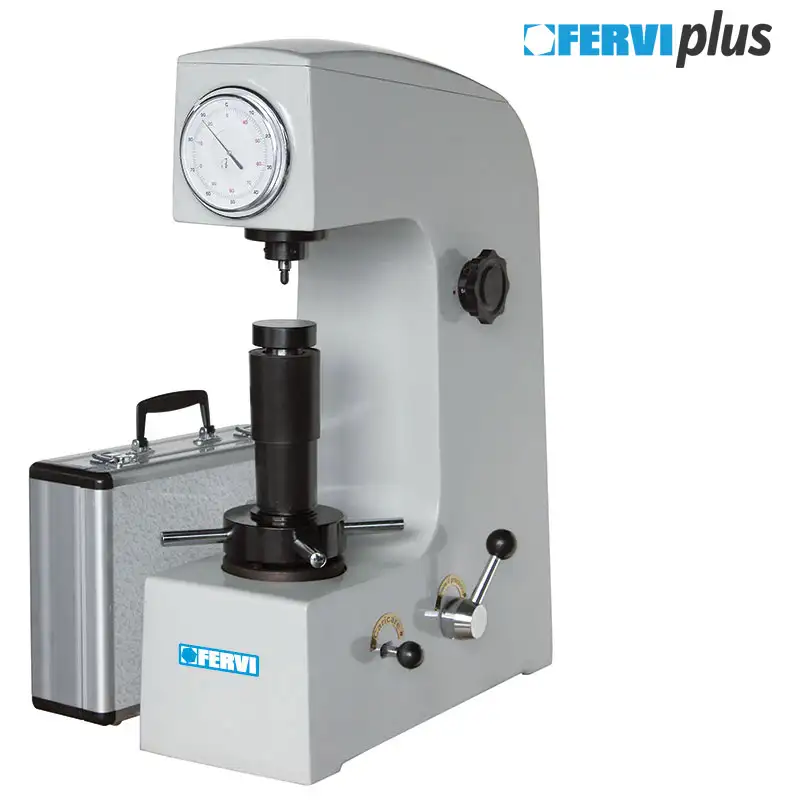Fervi D001 hardness testing machine is used to assess the hardness of materials, particularly metals, by measuring their resistance to indentation. This Rockwell hardness test equipment is used in manufacturing, engineering and quality control settings. It aids in determining material suitability for specific applications and ensures product reliability and durability.
Working Mechanism:
- This Rockwell hardness testing machine measures the hardness of a material by applying a minor load to an indenter, typically a spherical or conical diamond.
- This minor load establishes a reference point or zero position.
- Then, a major load is applied, causing the indenter to penetrate the material.
- The depth of penetration is measured.
- Finally, the hardness value is determined based on the difference between the final position and the reference point.
Features:
- It offers portability and enables convenient transportation and use in various work environments while increasing flexibility & accessibility.
- This Rockwell hardness test equipment includes a digital display, providing clear & easy-to-read hardness values for quick analysis and record-keeping.
- It has calibration capabilities for periodic recalibration to maintain accuracy over time.
Frequently Asked Questions:
Q. What are the factors to consider while choosing this hardness testing machine?
A. Major factors include the type of material to be tested, testing method, load capacity, accuracy, automation and software capabilities, ease of use, size and portability.
Q. How do I interpret the results?
A. This Rockwell hardness value is a combination of the depth difference and the specific test parameters (load, indenter type). Higher values indicate harder materials.
Q. What safety precautions should I take when using this hardness testing machine?
A.
- Wear appropriate personal protective equipment (PPE), such as safety glasses and gloves, to minimise the risk of injury.
- Receive thorough training on the operation of the hardness testing machine to ensure safe and effective use.
- Handle heavy components with care to prevent injuries caused by lifting or dropping.
- Securely position and clamp workpieces during testing to prevent movement or falling.
- Keep hands and clothing clear of moving parts to avoid pinching or entanglement injuries.
- Perform routine inspections of the equipment to identify any signs of wear, damage or malfunction.
 Change Country
Change Country
